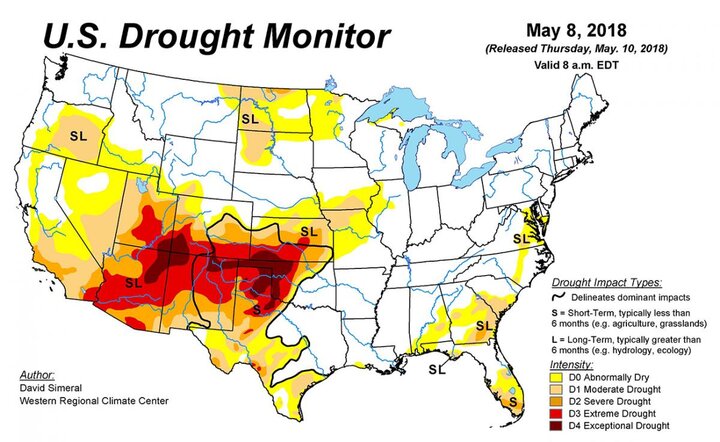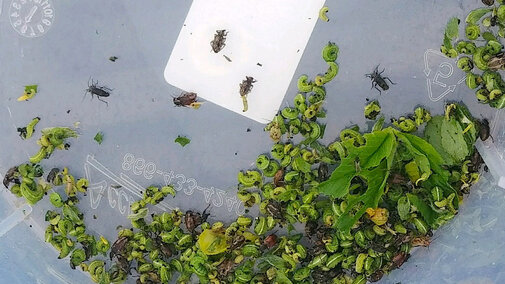Some producers and field scouts have been finding high populations of alfalfa weevils over the past couple weeks in alfalfa throughout the Nebraska Panhandle, northeast Colorado, and eastern Wyoming (Figure 1). Damage to regrowth after first cutting is anticipated for some fields this year, similar to what was seen previously.
It is very unusual to find large alfalfa weevil larvae in early May. These large larvae indicate that either a large number of adult weevils returned to alfalfa fields to lay eggs in the fall of 2017 or a large number of fall-laid eggs survived the winter (or both). This is the fourth year in a row that large alfalfa weevil larvae have been noted in the spring in this region. Because the overwintered adult weevils will lay more eggs in the spring, another group of larvae will appear later in the spring. Having two age classes of alfalfa weevils present in the spring greatly complicates alfalfa weevil management.
Alfalfa weevil larvae are also being reported in eastern Nebraska, but not at high levels. See this 2017 CropWatch article for recommendations on scouting and economic thresholds.
We highly recommend that you scout alfalfa fields regularly this spring to avoid economic losses in hay production. With the threat of prolonged drought in the south central and northern Great Plains (Figure 2), the price of alfalfa hay has been trending higher than at this time in 2017. USDA-NE Department of Ag Hay Summary for May 11 listed good large square bales at $150 per ton in eastern and central Nebraska and $190 per ton in western Nebraska.


